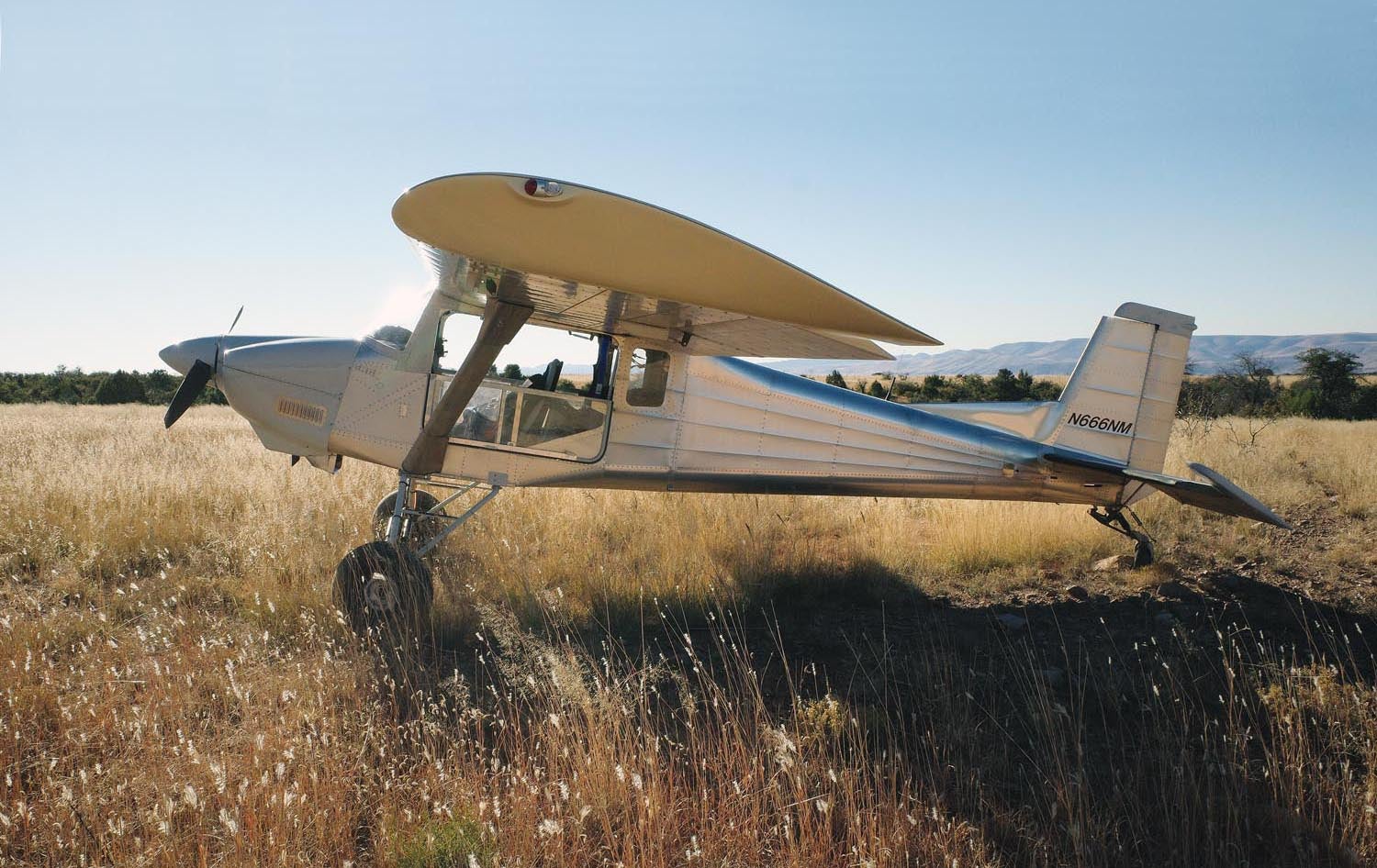
I enjoy several camping trips each year into the Utah backcountry. In the process I’ve gained a great deal of respect for, and adhere to, the limitations of my homebuilt Murphy Super Rebel. It’s a four-place taildragger with a Lycoming O-540 and spring steel gear. It’s currently sporting 8.00×6 tires. Over the last several years I’ve gradually learned what the airplane is, and is not, capable of in the backcountry, including surface conditions, runway length and a myriad of other factors. All of these have sparked many discussions with my good friend, Mike Marker, an experienced backcountry pilot.
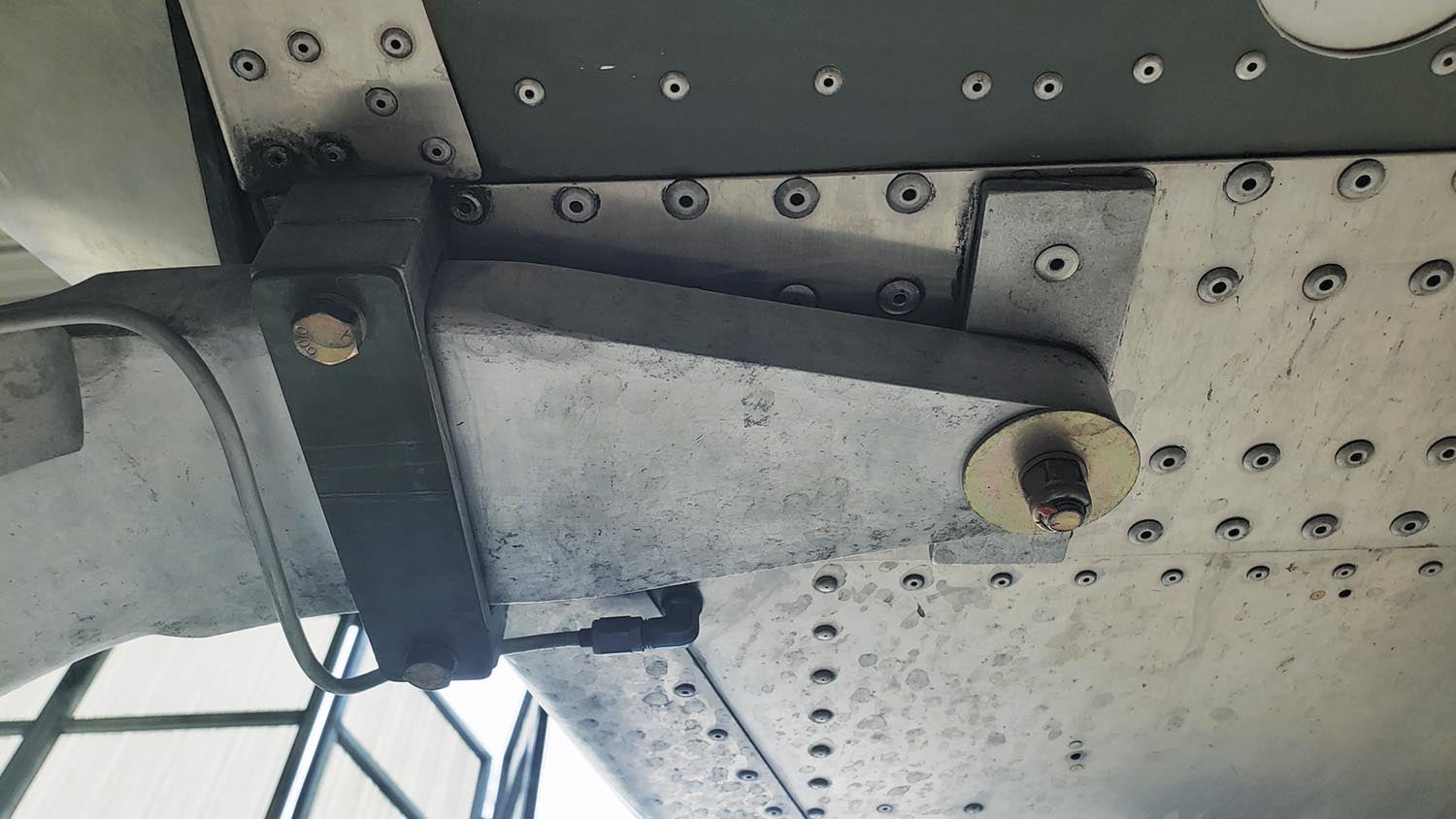
Many of you have met Mike’s wife, Jan, at AirVenture. She’s the lady with a smile who sells you ice at the Homebuilt Camping Pavilion. She recently retired as a software engineer. Mike is a retired aerospace engineer and an avid builder and pilot. He built his first airplane, an HP-18 sailplane, in the early 1970s, followed by a rebuilt EAA Biplane, a VariEze, a Long-EZ, an RV-4, a Glasair III, a Murphy Rebel, a Kolb FireStar, an RV-12, a RANS S-18 with the enclosure, a Carbon Cub and an RV-8, and now Mike is working on a Panther.
Why so many different aircraft? It’s the learning curve, the love of building and, in the end, all about the mission. For Mike and Jan, the VariEze was too small. And after flying to Alaska twice in their RV-4 in the late ’90s, they realized it was too difficult to stuff 120 pounds of gear in the airplane. Not to mention it had limited potential to explore sandbars and beaches.
Consequently, in the late 1990s, they purchased a Murphy Rebel kit and later the RANS and the Carbon Cub, always chasing a better backcountry experience. At the time they purchased the Murphy Rebel kit, the option was a Cub rebuild or the Murphy Rebel, and the latter was very inexpensive compared to the alternatives.
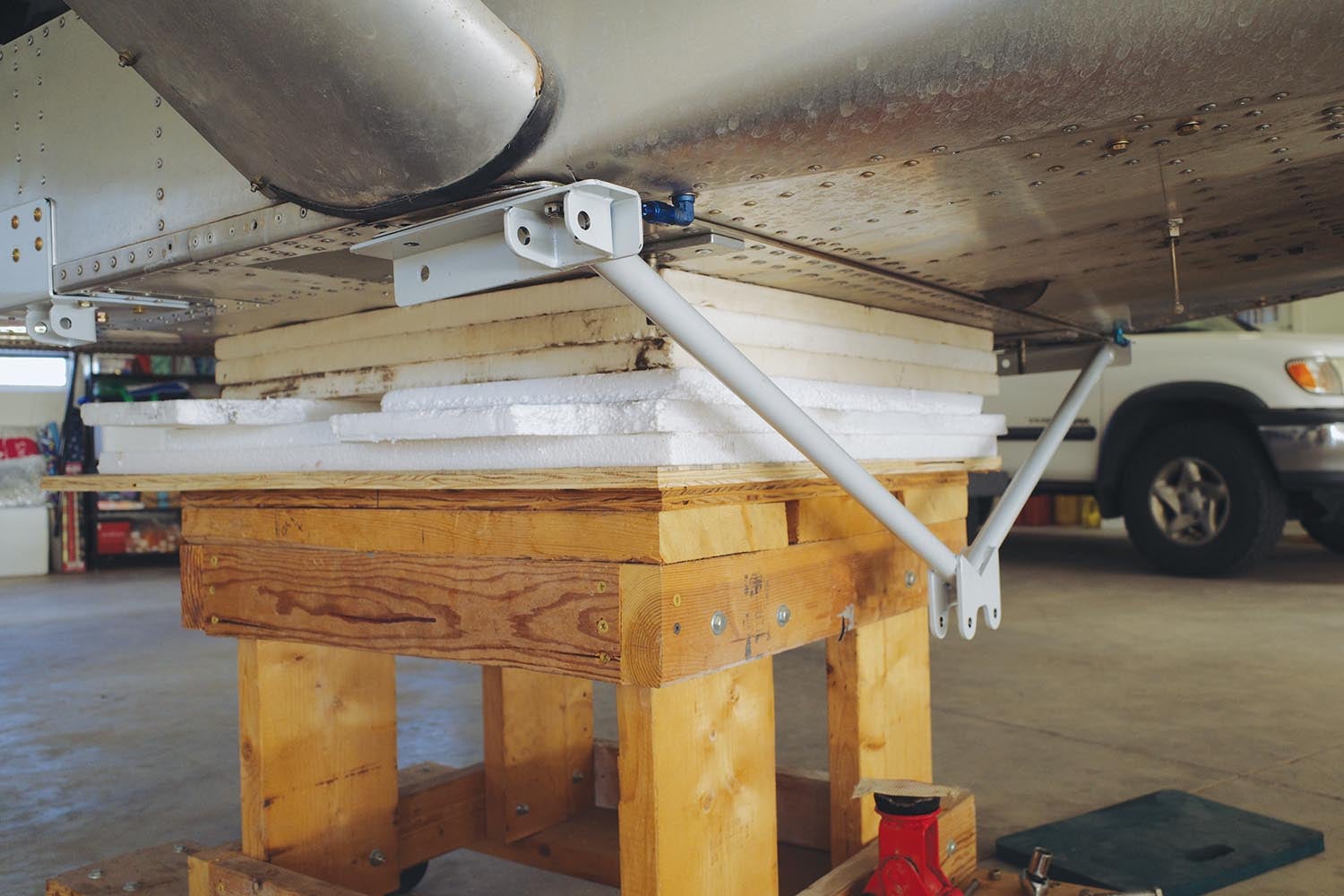
Flying With Mike
Mike is not just a serial builder. He has thousands of hours flying, is a CFII and is always willing to share his experiences. Mike and Jan have been traveling from their home near Albuquerque to Utah for over 20 years. First, simply camping and exploring. Then they discovered the numerous inactive uranium mining strips scattered across the state.
Mike has been a tremendous resource for me in opening up the world of backcountry flying in Utah, and I review every backcountry strip with him prior to each of my trips. On my most recent trip, he led me into Hidden Splendor with his Carbon Cub—one of the most beautiful and challenging approaches in Utah. It required a 1000-foot descent through a winding canyon, three wingtips wide at the narrowest point, and then a 90° turn to final on a narrow gravel strip with steep drop-offs on both sides.
It wasn’t long before Mike realized that most factory-built airplanes and Experimental aircraft were not built for these rough strips. Having built a dozen planes, combined with the knowledge he’d acquired from years of flying into the backcountry, he decided to make some improvements.
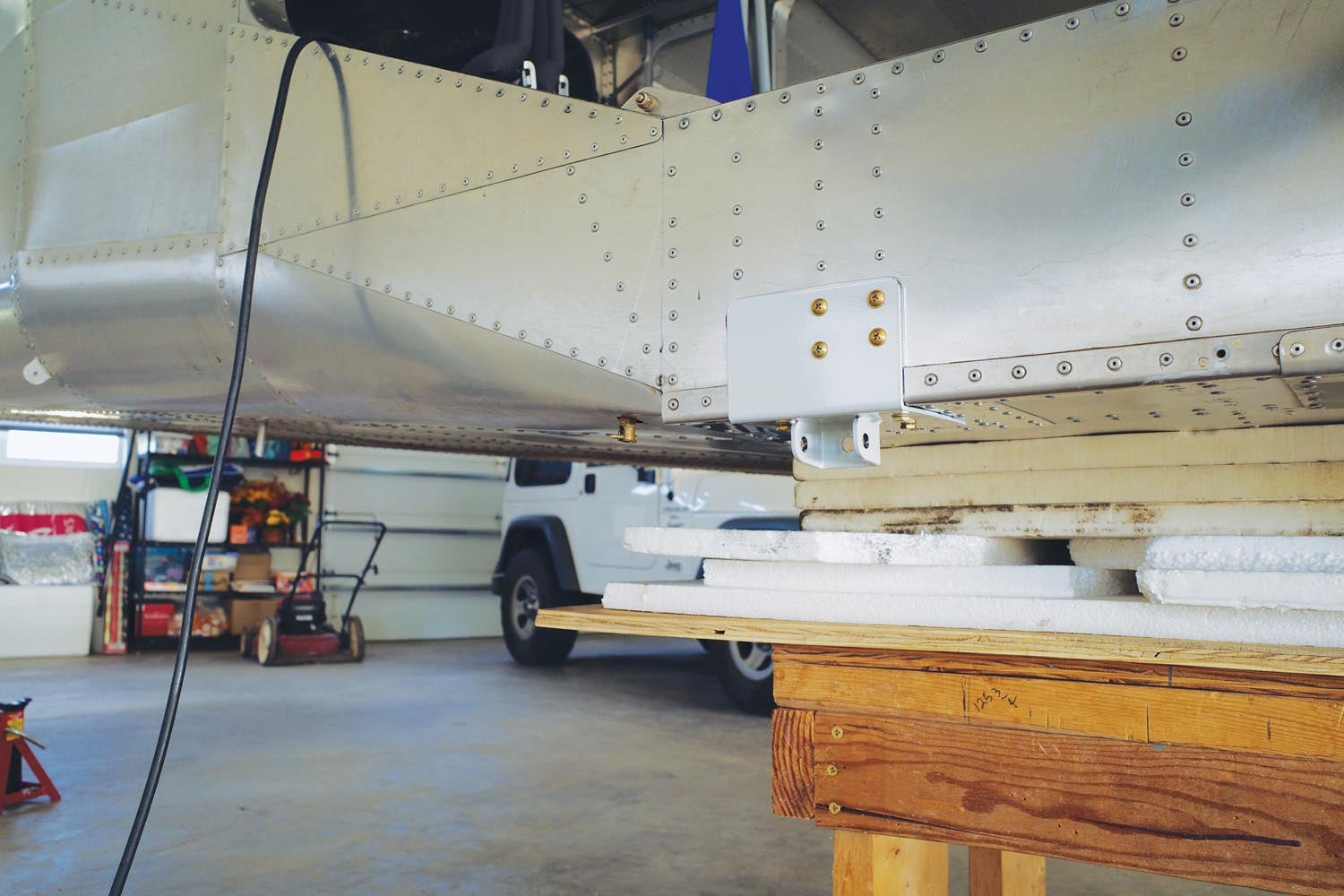
Tire Change
At first, the Murphy Rebel had a set of Michelin 8:00-inch tires on it and they worked reasonably well. When Alaskan Bushwheels first appeared on the market, Mike bought a set of 26-inch tires and put them on the RANS S-18. Mike is fond of saying, “It transformed the airplane.” It became a totally different aircraft and gave him the ability to land on New Mexico’s numerous sandy washes and other types of terrain throughout the Utah backcountry.
Later, Mike purchased a set of 29-inch tires for the Carbon Cub. Like the RANS, he immediately enjoyed the extra margin of error they provided in soft sand, rough terrain and other anomalies found in the backcountry.
Consequently, Mike decided to experiment with the Murphy Rebel. For those of you who haven’t flown an aircraft with spring gear, on anything other than a squeak-squeak landing, the gear tends to load up and quickly launch you back into the air. This complicates things in the backcountry because you can’t always make shallow approaches due to obstacles and increased runway slopes. As a result, you often land with some vertical descent.
As he went up the size chart, Mike found that on the Rebel, the 8:50-inch tires had to be perfectly balanced. The 26-inch tires were OK and had good balance, but the 29-inch Bushwheels didn’t work on the Rebel’s spring gear. They created a tremendous shimmy and shake—basically an out-of-balance condition on the spring gear. They were also very heavy, and the large range of air pressure possibilities played havoc with the Rebel’s spring gear. Mike believes their additional width, the weight of the tire and the additional mass simply excited the gear beyond what it was designed for.
On the Carbon Cub, Mike found that the 29-inch Bushwheels worked great. Of course, the Cub had a different gear—a bungee-cord type that was also very stiff but could still throw you back in the air.
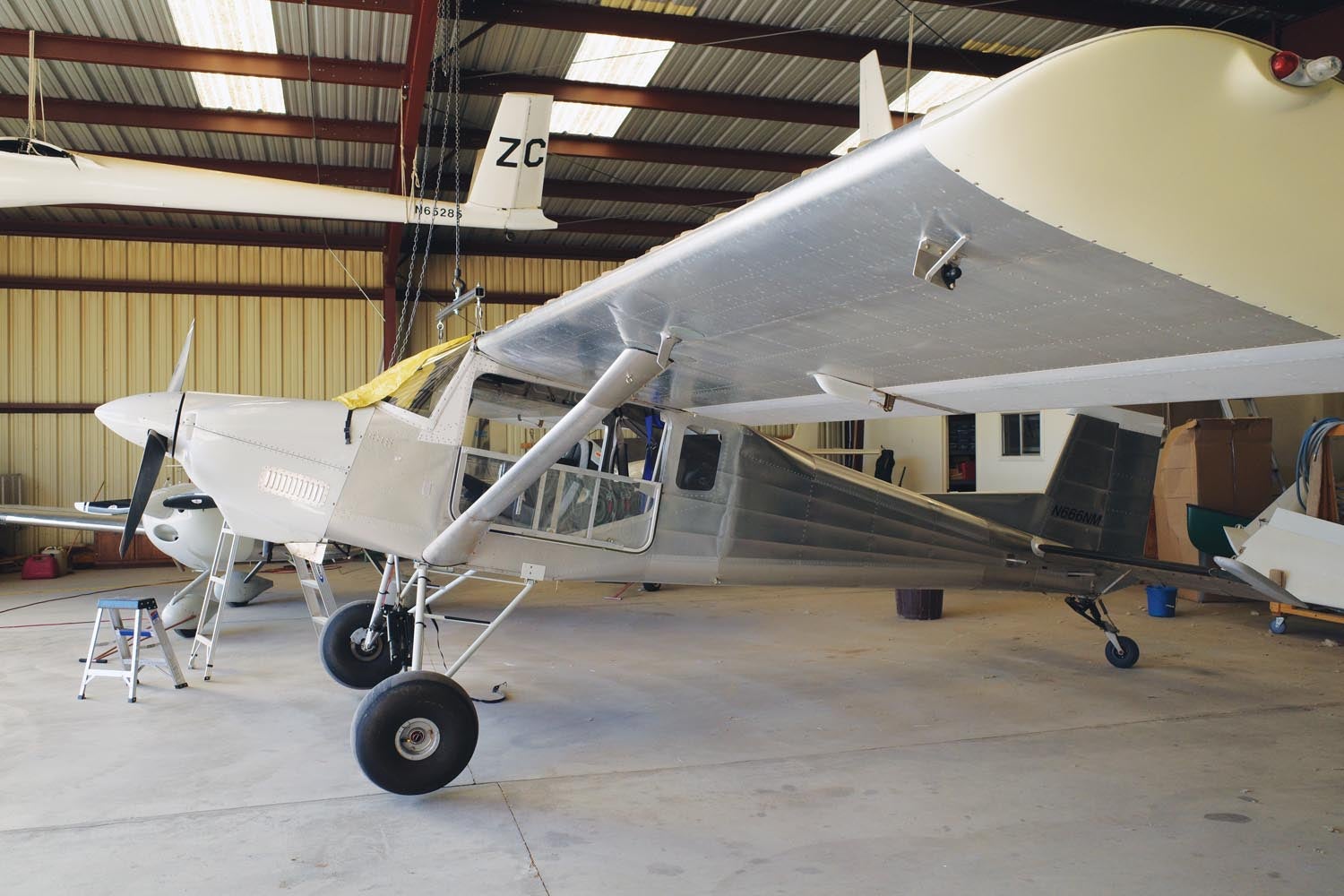
The Right Strut
Five years ago, Mike decided to experiment with Monster Shocks from TK 1 Racing, as a variety of Cub knockoffs have this type of gear. As on the RANS, the change transformed the Cub. He could now land with a substantial vertical descent and roll over rocks and ruts with no problems. This was because the struts are nitrogen-filled and work in both directions. They can compress and slowly meter out, providing a smooth ride. They also keep you on the ground better than the other alternatives.
Not wanting to give up on the Murphy Rebel, Mike decided to modify the gear with the same Cub-type gear. Both use two cylinders on each gear leg for an added level of redundancy. The cylinders are also adjustable for a soft or hard ride. Mike measured the various attach points, gear width, etc., and forwarded the dimensions to Tony at TK 1 Racing.
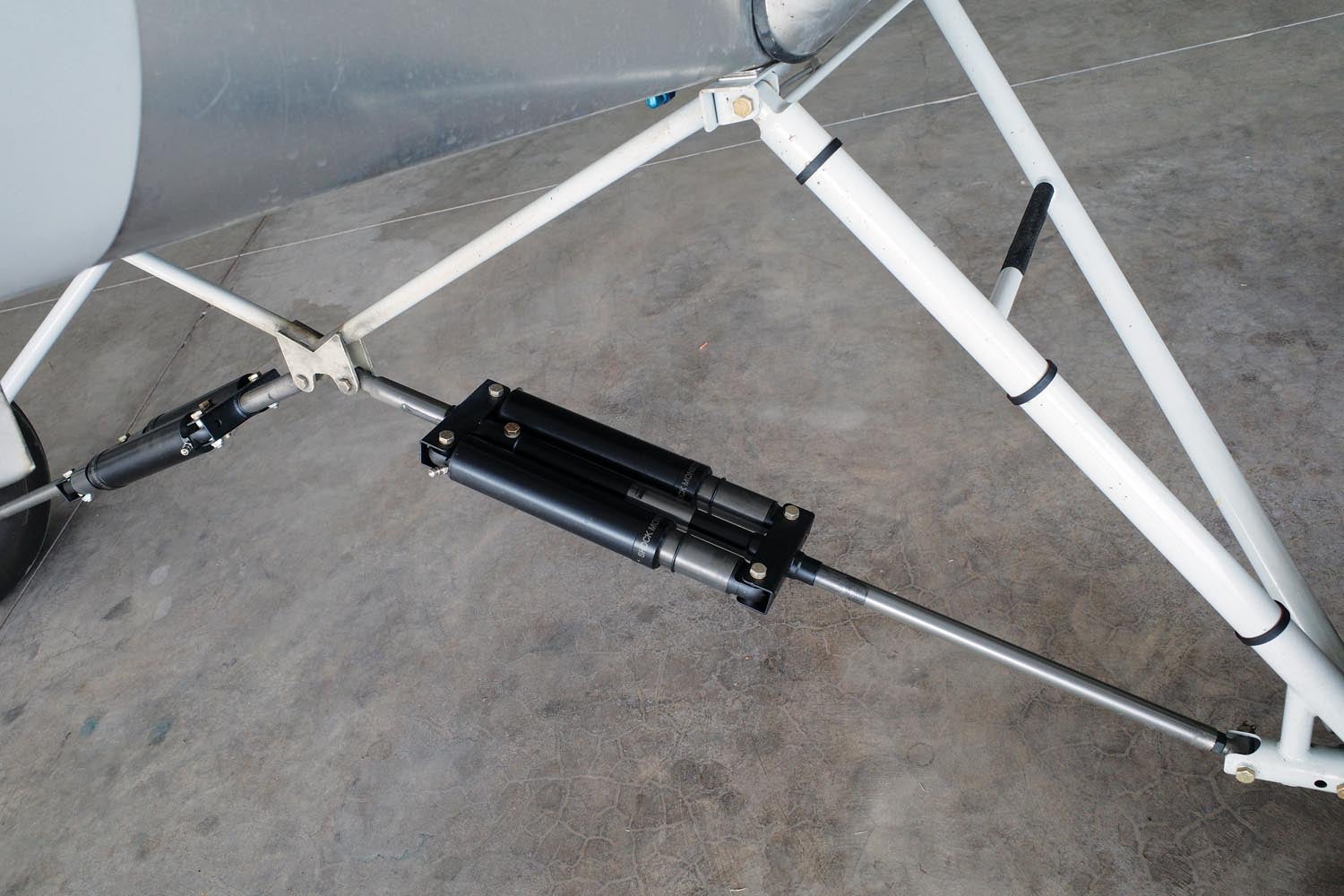
The Rebel’s spring gear used a saddle arrangement with two bolts attached to the aircraft’s carry-through beam structure. The new gear required little modification and used the existing spring gear attach points. The width of the new gear is 6 inches more than the original, and it also lifts the airplane up 3 inches higher. That’s more prop clearance on many of these backcountry strips. The overall weight difference was only 1 pound. According to Mike, the total cost of the modification was approximately $5000.
At the time I wrote this article, Mike had 60-plus landings on the new Rebel gear, with half on dirt. So far, the new gear system is performing well and has reduced his bounce rate. His next experiment will be to put the 29s on the Rebel. Mike believes these changes reduce risk and take anxiety out of operating on soft and often rough backcountry airstrips.
I noticed two different methods of plumbing the brake lines on his Rebel. Mike explained that he was experimenting with Nylaflow on one side and aluminum with loops on the other.
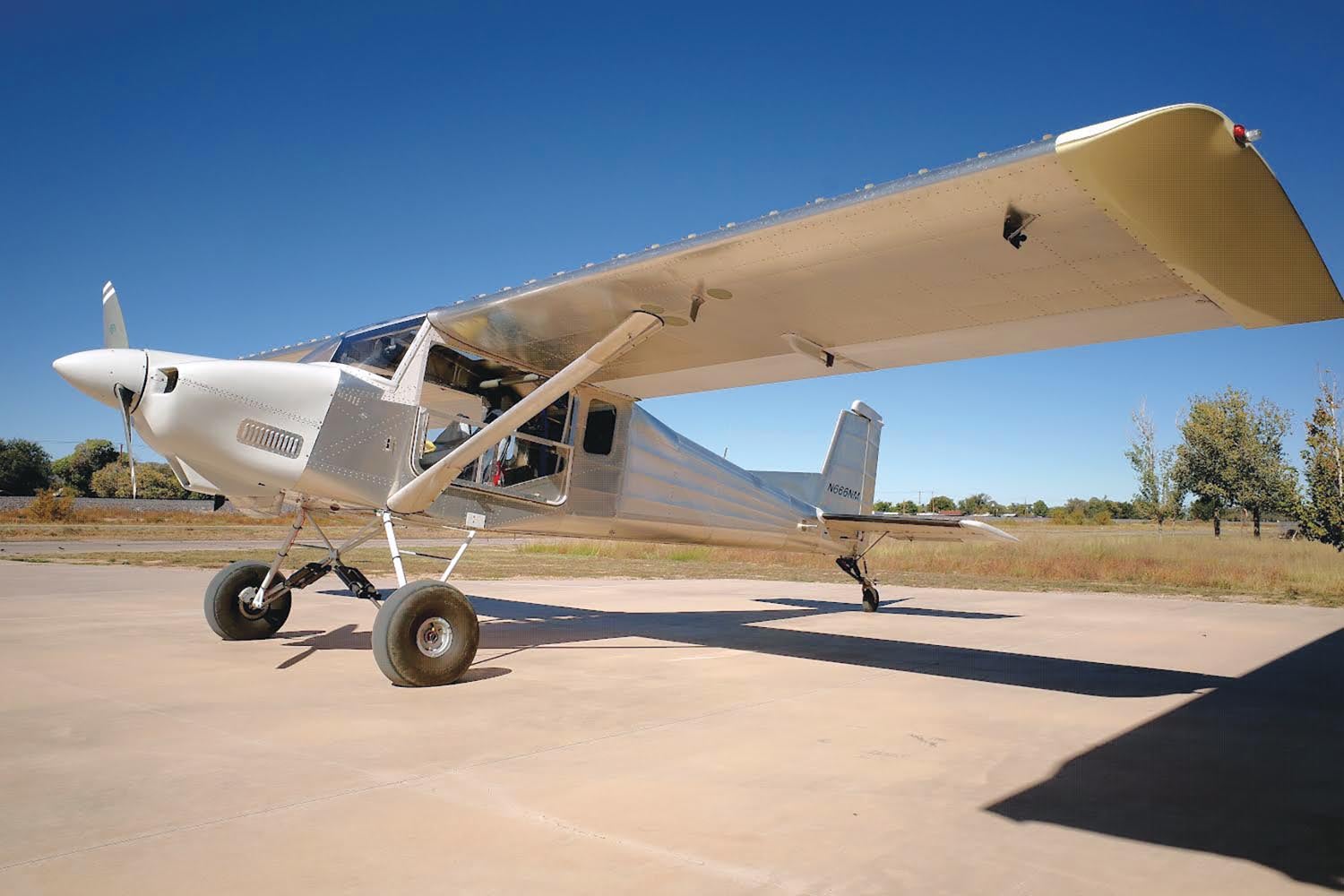
What next? The varied terrain and underbrush pose additional challenges and have destroyed two different types of tailwheel systems on Mike’s aircraft. First, the original aluminum spring on the Rebel and the second on his Cub, an early version of the T3 tailwheel shock absorber. Once, he flew home with just the remains of a tail spring wired together with safety wire. Consequently, he’s now using a tailwheel with a good suspension system that significantly reduces loads on the tail structure. But that’s a topic for another article.
Photos: Mike Marker.














Jerry, You knocked it out of the park with this synopsis of Back Country flying. Easy to follow the process Mike takes and it goes without saying Mike is always thinking and executing the next application to his passion.
Looking forward to seeing You, Jan & Mike at HBC for another great experience.
Jerry Fischer
Tech Counselor
Commercial Pilot MEI
RV-7 Builder
Caretaker of The Mockingbird RV-1
Another great story Jerry about the builders ability to design and implement changes on our amateur built aircraft to improve performance and ultimately making the aircraft to suit our flying purpose.
Great article! The Rebel is a wonderful performer and very roomy inside. If I ever take my Rebel off the floats, this will be a great reference source. Thank you.